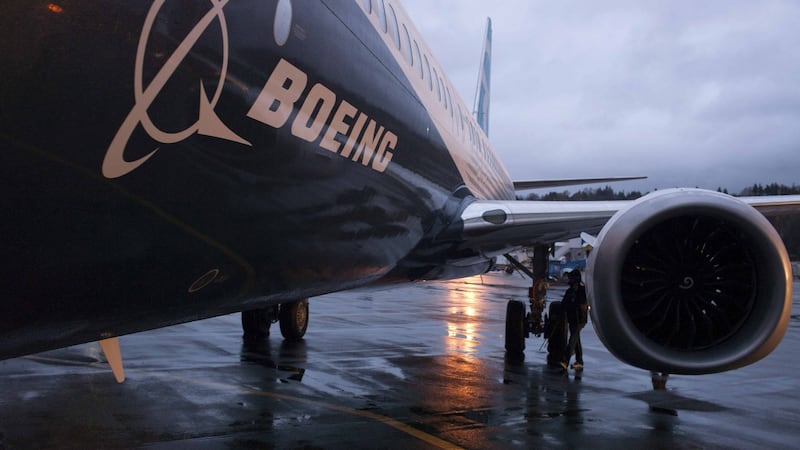The model of Boeing aircraft involved in two fatal crashes in the last five months, including Sunday's Ethiopian Airlines disaster, will continue serving Irish airports and passengers.
There are 13 Boeing 737 Max aircraft on the Irish aircraft register, the Irish Aviation Authority (IAA) said. It will not follow the lead of regulators in China, Ethiopia and Indonesia, all of whom ordered carriers to ground the 737 Max model in the wake of the crash, which displayed similarities to the earlier Lion Air incident. And Irish airlines are reserving judgment on the use of the aircraft.
Lahinch native Micheál Ryan, who worked for the United Nations world food programme, was among those killed in the weekend’s crash.

In addition to the Ethiopian accident, a Boeing 737 Max operated by Lion Air was involved in a fatal crash in Indonesia last year which claimed the lives of 189 passengers and crew.
Ryanair has placed an order for 110 aircraft similar, though not identical, to the one which crashed outside Addis Ababa on Sunday. The carrier indicated it had no plans to back away from the deal which will see the first aircraft delivered at the end of April.
Its chief executive, Michael O’Leary, said he was not planning “any action at the moment” regarding the deal.
In a statement, the IAA said it is awaiting further information from a variety of bodies, including the US Federal Aviation Administration and Boeing, the manufacturer of the months-old 737 Max which crashed on Sunday.
The IAA is also consulting with the European Aviation Safety Agency on the circumstances of the accident, it said.
“As safety is paramount to passenger and aircraft operating crews, the Irish Aviation Authority will issue notification to all operators of Irish-registered Boeing 737 Max as soon as any further information becomes available,” it said in a statement.
The IAA is responsible for Irish-registered aircraft, but Irish airports may also be serviced by non-Irish registered aircraft of this model.
A spokesperson for the Department of Transport said it was “monitoring the situation in close co-ordination with the Irish Aviation Authority, which has statutory responsibility for aircraft licensing and safety in Ireland”.
Norwegian Air – which uses the model to service its transatlantic routes, including those to and from Irish airports – said it had no current plans to withdraw the aircraft from service.
“All of our Boeing 737 Max 8 aircraft are operating as normal. We are in close dialogue with Boeing and follow their and aviation authorities’ instructions and recommendations. Our passengers’ safety is and will always be our top priority,” said Tomas Hesthammer, the airline’s director of flight operations.
Norwegian currently runs transatlantic routes from Dublin and Shannon to Providence, Rhode Island and New York Stewart airports. The Providence route is also served from Cork Airport, and there is a route from Dublin to Hamilton-Toronto. All these routes are serviced using the 737 Max 8.
Larger engines
The 737 Max 8 model carries larger than normal engines, which are mounted higher than usual to avoid contact with runways.
This changes the aerodynamics of the aircraft, which prompted Boeing to change its flight-management software. One aspect of the changes has been to introduce a feature which automatically sends the aircraft into a shallow dive if a stall is detected and the aircraft is in danger of losing its capacity to generate lift, which keeps it in the air.
Initial indications from a crash involving the same aircraft in Indonesia last year suggest that this software may have played a contributory role. Speaking on the Today programme on RTÉ yesterday, former Aer Lingus pilot Eugene McCarthy said he would "like to see Boeing doing a little bit more" after the crash.
He said that the new software system “appears to be issuing some false warnings on board the aircraft” which have a direct impact on the controls of the aircraft.
He said that due to the fuel savings possible with the new aircraft, airlines will be “flocking to buy them”, but he argued that “350 people have lost their lives so far, so it’s time for some radical action”.
Capt Evan Cullen of the Irish Airline Pilots Association urged caution. “You can’t speculate. You should wait for the facts,” he said.









